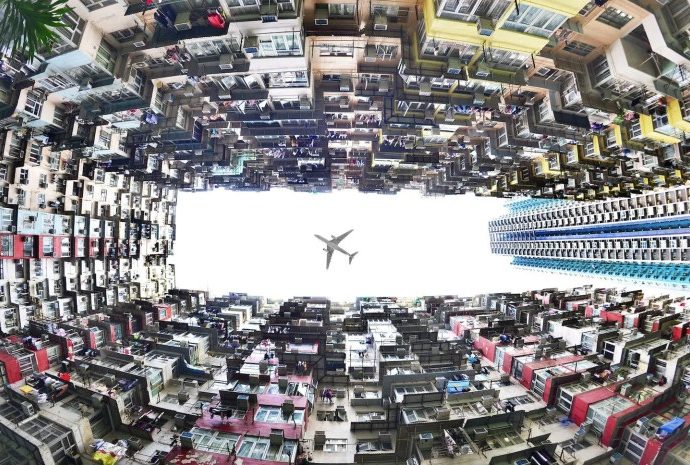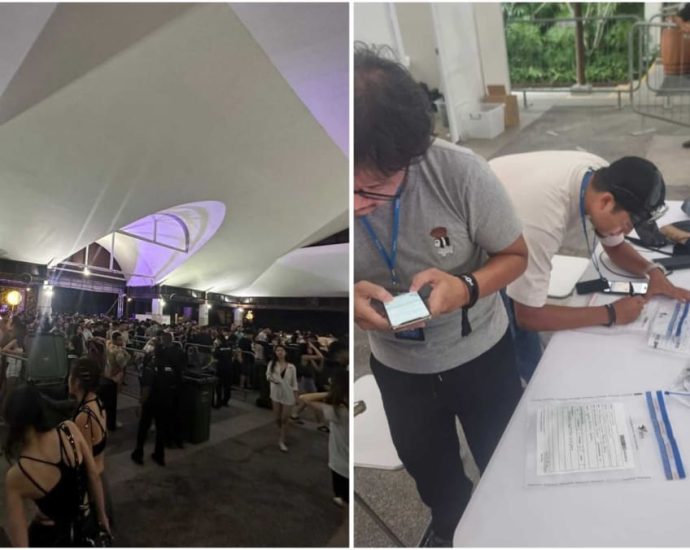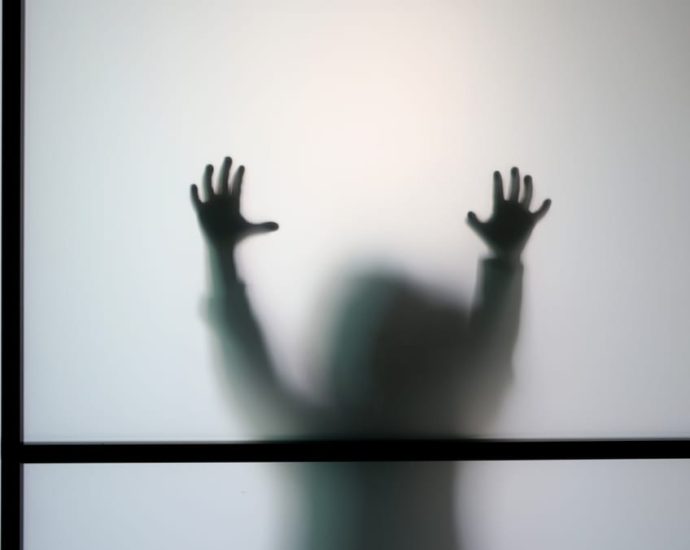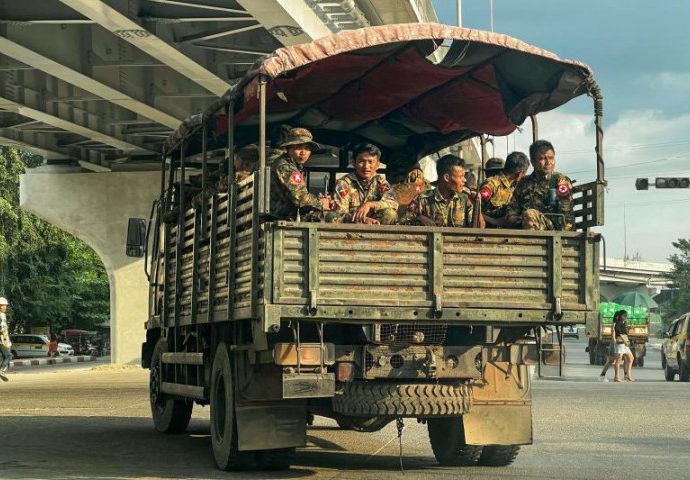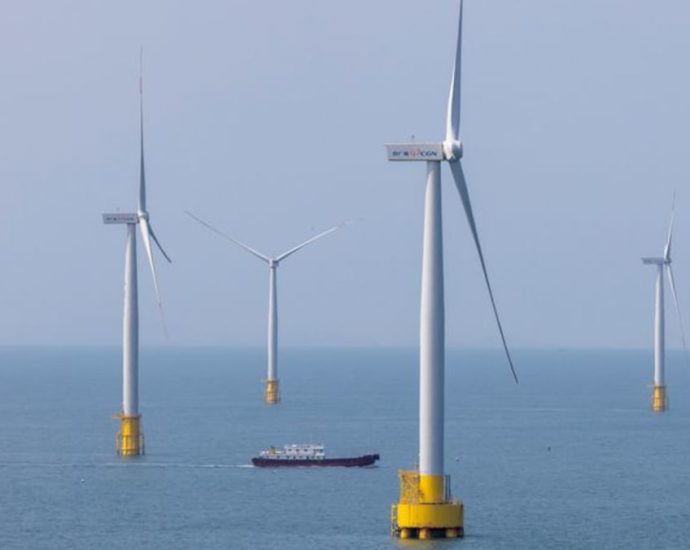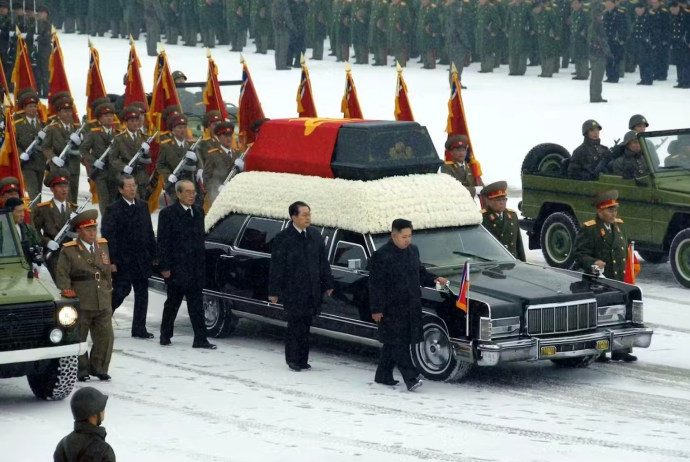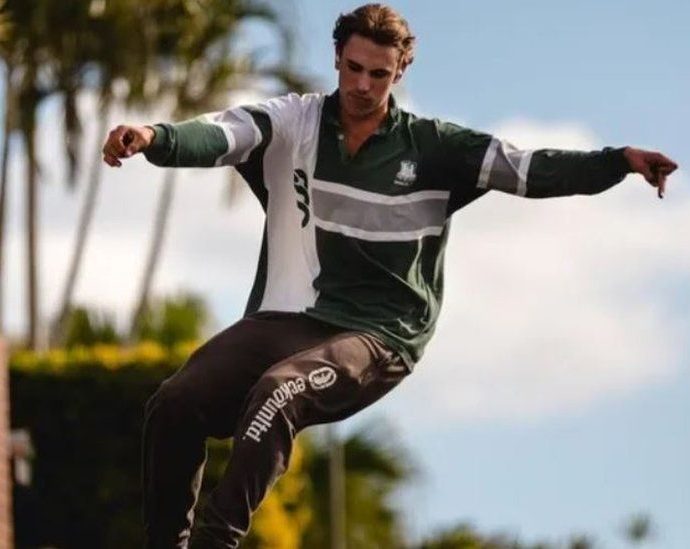Myanmarâs instability deepens as the world watches silently
Myanmar’s stability has eroded significantly since the 2021 military coup. But the coordinated attack by multiple separatist and pro-democracy groups in October and November 2023 has seen military outposts, villages, border crossings, and other infrastructure overrun.
While the Tatmadaw, Myanmar’s military, clings to control in central and coastal regions populated by the country’s ethnic majority, much of the country’s border areas are increasingly slipping into anti-government control.
This current turbulence is not an aberration but deeply rooted in Myanmar’s history. Since gaining independence from British rule in 1948, the country has grappled with what is commonly described as the world’s longest-running civil war.
Initial experiments with democracy witnessed limited clashes between Myanmar’s central government and Ethnic Armed Organizations. After a military coup in 1962 that established the junta, more EAOs emerged to challenge government power.
Infighting and splintering among EAOs, coupled with their growing antagonism toward the Burma Communist Party (BCP), itself waging a war on the central government, allowed the junta to implement fragile ceasefires in exchange for limited autonomy. By the end of the Cold War, democratic protests in 1988, the collapse of the BCP in 1989, and free elections in 1990 all suggested Myanmar was cautiously embracing a peaceful future.
Despite losing the elections in 1990, however, the junta did not relinquish power, drawing international condemnation. EAOs and other groups like the Myanmar National Democratic Alliance Army (MNDAA), which split from the BCP, then continued their struggle for two decades until the junta ceded some powers to a civilian administration in 2011.
Elections in 2015 and 2020 saw landslide victories for the National League for Democracy (NLD), as well as some progress toward reconciliation.
But in 2021, the Tatmadaw re-established the junta and plunged the country back into destabilization, culminating in the 2023 autumn offensive by anti-junta forces.
In addition to EOAs and a reorganized BCP, the junta has been forced to contend with People’s Defense Forces (PDFs), loose armed organizations backed by the National Unity Government (NUG), set up by lawmakers and politicians in the aftermath of the coup. Additionally, the role of the Burman ethnic majority and grassroots civil defense forces in opposing the junta has also complicated its response to unrest.
The junta has proved adept at managing its restive elements before, and can also rely on its Border Guard Forces (BGFs) and other pro-government militia groups. But the broad swaths of Myanmar’s society fighting against it have made the junta’s traditional policy of divide and rule far less effective.
Myanmar’s Acting President Myint Swe has said the country could “split into various parts,”prompting Myanmar military officials to retreat to the capital, Naypyidaw, a planned city completed in 2012 that in effect serves as a fortress located near the most restive regions.
Evolving role for China
China’s role in Myanmar has undergone significant shifts since the latter’s independence. Despite Chinese support for the BCP and other communist groups, Myanmar grew closer to China after its isolation from the West in the 1990s. Beijing supported the junta to stabilize Myanmar and prevent adversaries from establishing a foothold on China’s southern border.
Other interests included maintaining access to Myanmar’s raw materials and natural resources, as well as infrastructure development to turn Myanmar into a strategic gateway to the Bay of Bengal through the China-Myanmar Economic Corridor (CMEC), part of China’s Belt and Road Initiative (BRI).
China maintained ties to the junta, democracy advocates, and ethnic groups from 2011 to 2021. However, the 2021 coup disrupted development projects and led to attacks on Chinese-run facilities by rebel groups, and the junta’s inability to protect infrastructure exacerbated historical tension between it and Beijing.
Four Chinese civilians were killed in 2015 after a Myanmar military air strike hit across the border into Yunnan, while the junta burned down a Chinese-owned factory and killed Chinese and Myanmar civilians in 2021.
China’s ongoing support to some militia groups, such as the United Wa State Army (UWSA) and MNDAA, provides Beijing leverage over the junta and a say in the ceasefire processes.
Chinese firms also often work with armed groups in “special economic zones” near the border, and some of the anti-junta groups regularly cross the border to China to escape the junta and its proxy forces. Beijing’s tacit approval of their activities may also be partially fueled by wariness that rebel groups were becoming closer to the US prior to the new offensive.
Beijing has nonetheless attempted to sustain a balancing act, arresting a UWSA deputy military chief in October and initially ignoring calls for assistance from the rebels after the launch of their offensive. But after the steady string of defeats suffered by the junta, China has since altered its outlook. China’s affiliates now form some of the most powerful groups operating in Myanmar, and its Foreign Ministry has called for a ceasefire.
Organized crime
Myanmar’s porous borders have not only allowed armed groups to flourish but also facilitated the expansion of organized crime networks. Increased cooperation between militant and criminal groups in recent decades, known as the terror-crime nexus, has elevated the power of these groups worldwide.
American efforts to counter communism inadvertently helped develop drug networks in Myanmar during the early Cold War, while transnational organized crime in Southeast Asia burgeoned in the 21st century. The Covid-19 pandemic further established Myanmar as a hub of criminal activity, expanding the funding networks available to the country’s armed groups.
Both local and international criminal networks operate in Myanmar’s special economic zones, engaging in human and wildlife trafficking, slavery, cybercrimes, money-laundering, communication fraud, illegal casinos, and online gambling centers.
The relationships between these entities and governments are intricate, with shifting alliances commonplace. Beijing and transnational Chinese gangs play central roles in Myanmar’s heightened criminal activity. The junta has also had close ties to criminal networks for decades, and since the 2021 coup has become increasingly reliant on criminal activity to finance itself and offset international isolation.
China, while entangled in Myanmar’s criminal underworld, has grown steadily more concerned with rising illicit activity on its border with Myanmar and the willing and unwilling participation of Chinese citizens.
China’s signals to the junta to address the forced-labor networks since May 2023 went unheeded, leading to China issuing arrest warrants for junta allies and the UWSA to raid online scam compounds and trafficked-labor centers in border regions.
However, the resilience of regional criminal groups became evident after the NLD failed to disrupt their activities during the decade of partial democratic rule from 2011 to 2021, and they have only grown financially stronger since.
And despite their interweaving with regional elites, criminal networks and their militant partners have developed newfound agency and an ability to act independently from governments since the 2021 coup.
Militarized ethnic groups
Additionally, while the junta styles its current campaign as a counterinsurgency, Myanmar’s armed groups possess significant military capabilities. Minority groups such as those belonging to the Karen ethnic group were prominent in Myanmar’s armed forces during the British colonial administration, gaining valuable experience.
As in Ethiopia, certain ethnic groups have developed and maintained well-equipped forces capable of both insurgency and conventional warfare.
Like other anti-government forces around the world, Myanmar rebel groups have also embraced new technologies and strategies in recent years. This includes crowdfunding initiatives, which have expanded significantly since 2021, to offset the junta’s control over the central bank and other national economic levers.
Large-scale application of drone warfare has also made a marked difference on the battlefield, even before the current offensive by the rebels.
Myanmar’s militant groups have also worked with European criminal groups to obtain weapons, and groups like the UWSA have proved capable of manufacturing weapons since 2008. The use of 3D-printed guns by Myanmar rebel groups, just 10 years after the first 3D-printed gun was produced, also marks a distinctive feature of the current conflict.
The NUG has meanwhile been busily setting up local civic administration and public services and People’s Administrative Teams (PATs) in PDF-controlled or contested areas, indicative of their state-building capabilities.
Shaky support for junta
Hindered by international isolation, increasingly powerful rebel groups, and a growing dependence on a Chinese leadership willing to support multiple sides, the junta’s outlook appears bleak. But it does maintain some other allies abroad.
Russia grew closer to the junta throughout the 2010s and despite being tied down in Ukraine, Moscow has offered more support for Myanmar since the coup, including the first ever Russia-Myanmar joint naval exercise last month. Bordering states Laos and Thailand also maintain friendly ties to the junta, and Laos, holding the chairmanship of ASEAN since September, has shielded Myanmar from greater institutional isolation.
Myanmar’s other neighbors, India and Bangladesh, are also wary of additional instability and the potential emergence of a failed state on their borders. India has already seen tens of thousands of refugees (as well as soldiers from the junta) cross the border since 2021, while Bangladesh has seen close to a million Rohingya refugees enter the country since 2016, and India has recently shown it is still willing to engage with the junta despite its vulnerability.
Efforts to further unite anti-government forces meanwhile face obstacles due to differences in strategies, objectives, and allegiances. Several organizations have been set up to encourage greater coordination, but infighting is still common.
Some EAOs, such as the Restoration Council of Shan State (RCSS), are still open to adhering to the Nationwide Ceasefire Agreement (NCA), while others consider a federal system a viable alternative to complete independence.
Perceived indifference to the Rohingya crisis in 2017 on behalf of the democratic government at the time also reveals the persistent ethnic tensions among Myanmar’s population despite alternative leadership.
Persuading criminal and militant groups to give up their lucrative illicit networks, as well as untangling their links to the junta-dominated economy, will also prove challenging. And with the US diplomatically tied down in Ukraine and Israel and ASEAN’s divided approach to the crisis, China enjoys relative freedom to manipulate the situation on its border.
Yet despite positive relations across Myanmar’s political spectrum, Beijing’s reluctance to intervene more directly only amplifies the persistent uncertainty surrounding Myanmar’s future.
This article was produced by Globetrotter, which provided it to Asia Times.
In loving memory of John McBeth
Journalist John McBeth, 1944–2023
John McBeth, a New Zealand-born journalist who is renowned throughout Asia for his meticulous and ground-breaking monitoring, passed away shortly after becoming ill. He weighed 79.
McBeth’s reporting over a more than 62-year job influenced events in nations like South Korea, Thailand, the Philippines, Vietnam, Cambodia, and Indonesia.
Earlier in the 1990s, I first met John as a new editor at the Far Eastern Economic Review. He was already one of my heroes.  , I read his narratives in the school library’s Review while I was a student in London.  ,
His engrossing records of conflicts, coups, and nebulous political plots stoked my interest in Asia, which eventually inspired me to relocate there and work as a blogger.
John was a blunt-spoken “old class” writer. His writing did n’t hold back and had a significant impact on many of the region’s policymakers over the years. In nations where the reality was obscured by censorship or historically driven obscurity,  ’s clear explanatory style, which was frequently proof to editing, made his articles readily accessible to both locals and foreigners.
We collaborated on numerous stories in Indonesia around the downfall of President Suharto in 1998, and I recall a include tale in the Review about the central part of wealthy elites in Philippine politics that was published under the banner article” Bossism.”
John sat at the keyboard of our ancient office desktop computers spewing out straightforward but powerful prose as protests broke out in Jakarta and soldiers opened fire on students. I followed behind him and occasionally kindly allowed him to insert more complex explanations.
He was on the piano’s guitar area, and I was playing the conflicting black keys, making it feel like a duet.
He may say that we were the most unlikely of companions. John, the son of a Taranaki cheese farmer, was born on May 31, 1944, in Whanganui, New Zealand. My more wild upbringing and my elite British education frequently caused us to disagree on more important issues. We shared a love of Asia and the desire to write great stories.  ,
John liked to boast that he had worked as a blogger longer than any of us. Beginning in 1962, when I was four years old, he began working for the Taranaki Herald. In later 1965, he relocated to the Auckland Star. He recalled covering the Beatles ‘ visit to New Zealand and conducting interviews with the Rolling Stones.
Early on, he wanted to work on Fleet Street in London, but when his goods ship sank in Jakarta due to a ship’s grounded. He fell in love with Asia as soon as he stepped ashore and stayed ever since. He frequently reprimanded several of his colleagues who came to the area for a few years but not stayed because he took pleasure in being an Eastern “lifer.”
McBeth spent time in Jakarta and Singapore before settling in Thailand for fifteen years. There, he worked for magazines like the Asiaweek, which is based in Hong Kong, the Bangkok Post, and Agence France- Presse, United Press International, London’s Daily Telegraph, among others.
Early reports from Thailand by McBeth, who wrote passionately about the situation of immigrants and battle victims, concentrated on the Eastern migrant crisis and the Vietnam War. The Thai bandits who raped and killed Vietnamese boatmen were the subject of his writing.
After a lengthy immediately bus ride from Bangkok, he frequently arrived at the border to interview survivors. He was one of the first American journalists to expose the Khmer Rouge’s tyrannical rule in Cambodia.
McBeth joined the High Eastern Economic Review team in May 1979. There, he covered five dictatorships, including the failed one in Bangkok that killed American photographer Neil Davis in 1985.
McBeth loved Thailand and its citizens and was a more than lifelong member of Bangkok’s hard-working global media army.  , Yuli Ismartono, a international journalist from Indonesia, and he met in Bangkok.  ,
From Review reports bureaus in Bangkok, Seoul, Manila, and Jakarta, he produced scientific articles and numerous special reports. McBeth revealed that North Korea was developing a atomic weapons while he was in Seoul working with colleagues Nayan Chandra and Shada Islam.
McBeth had his leg amputated while based in Manila, but he was adamant that it would n’t hurt his career and soon returned to writing exclusives for the Review. Yuli supported him throughout his condition and gave him back his confidence so he could resume area reporting.
John wrote sections for the Singapore Straits Times from the end of 2004 until the beginning of 2015, focusing on Indonesian and local affairs. Additionally, his work has been published in The National ( Abu Dhabi), the Nikkei Asian Review, the South China Morning Post, The Strategist by the Australian Strategic Policy Institute, and most recently the Asia Times.
Some of McBeth’s stories are described in his 2011 text” Reporter: Forty Times Covering Asia.” The Loner: President Yudhoyono’s Decade of Trial and Indecision, his 2016 guide, examines the ten-year reign that Susilo Bambang Yujhodyonok ruled over.
Some of Asia’s officials, politicians, and policymakers had McBeth as a friend.
Many of the local journalists in the area looked up to him for guidance and inspiration, especially those who worked for neighborhood publications. He also railed against reporters whose writings failed to distinguish between reality and mind.  ,
He once exploded at a sub-editor at the Review who claimed that Asian audiences would n’t understand the allusion when he made reference to something not being” silver bullet,” which could be an editor’s nightmare.
On the other hand, readers of Asia Times rarely received cleaner version and dared not proceed a comma without his gracious consent. One of the last of a century of foreign journalists to live the narrative and call Asia house, McBeth noted in his final report to Asia Times that he had first arrived in Asia by ship rather than aircraft.
He is survived by his family Yuli Ismartono, a well-known journalist in Indonesia. At Asia Times, he may be terribly missed.
( Reporting from Bangkok was contributed by Shawn W. Crispin )
Why Chinaâs vocational school drive is causing âstrong anxiety among parentsâ
Ivan Zhai, a senior executive of overseas admissions at an Ontario-based high school, said,” We could feel the strong anxiety among parents that nearly half the students ca n’t make it to an academic highschool- the common pathway to college and university.” Studying abroad has become their lifeboat because theyContinue Reading
176 people caught for possessing vapes at ZoukOut
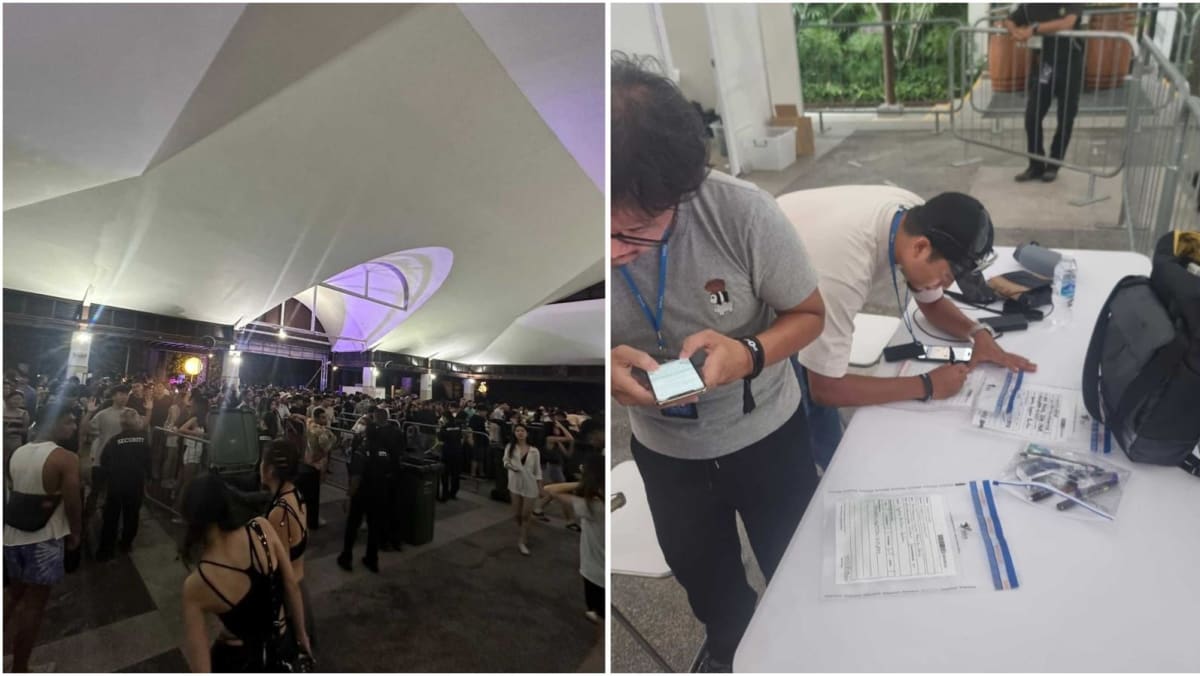
SINGAPORE: According to a press release from the Health Sciences Authority ( HSA ) on Friday, December 8, 176 people were detained for possessing e-vaporizers at the ZoukOut dance music festival.
The procedure, which took place on December 2 and December 3 at the occasion held in Siloso Beach, Sentosa, was a part of HSA’s efforts to enforce the ban on e-vaporizers in Singapore.
According to HSA, the criminals were between the ages of 18 and 51. They will also face a fine and have all e-vaporizers seized and confiscated as punishment for their offenses.
The power stated that” Members of the public are reminded that the hands, use, or purchase of e-vaporizers is illegal and carries a utmost good of S$ 2, 000.”
HSA added that it will not hesitate to take severe police action against those who engage in illegal activities, such as the sale of restricted e-vaporizers to the general public.
Public data on the illegal trade, supply, price, or offer for sale of e-vaporizers can be obtained from the HSA’s Tobacco Regulation Branch at 6684 2036 or 6744 2037 during business days.
Woman charged with hitting baby girl’s face multiple times in infant care centre

SINGAPORE: A 40-year-old person has been charged with repeatedly hitting a 1-year girl, leaving bruises on her right face.
According to gag orders the court issued to protect the victim’s identity, the woman never been identified.
On March 15 of this year, at around 5 p.m., she was given one matter of mistreating a baby.
The judge enquired as to the relationship between the accused and the target when the counsel requested that the gag order be imposed.
The victim was in the maintenance of the child care provider, and the location is the center, the prosecutor retorted.
He declared that the trial was prepared to move forward with a second charge.
The girl claimed she intended to enter a guilty plea and would not be hiring counsel while remaining silent while listening to the proceedings.
In January, she was given the option to enter a criminal plea.
According to the Children and Young Persons Act, a person can be sentenced to eight years in prison, fined up to S$ 8, 000, or both if she is found guilty of mistreating the baby in her attention.
Thailand, Myanmar agree to form taskforce for humanitarian aid delivery
8 Dec 2023 at 09: 59 Discussed

According to Thailand’s Ministry of Foreign Affairs, the two countries have agreed to establish a task force to improve humanitarian aid to displaced people at their boundary and, if successful, to increase that to include other help organizations.
Thailand hopes that the program will strengthen army-ruled Myanmar’s relationship with the Asean union and the global community. The decision was made at a gathering of their top officials on Thursday.
The Thai government is prepared to construct shelters along the border to receive refugees in the event that fighting in Myanmar intensifies, according to Deputy Prime Minister and Foreign Affairs Minister Parnpree Bahiddha- Nukara on Sunday ( Dec2 ).
An influx of refugees under the current circumstances is doubtful. However, going forward, if murder worsens, there may be immigrants fleeing in all directions, not just to Thailand, according to Mr. Parnpree.
Many entrepreneurs and cargo trucks were stranded in the border town of Myawaddy on Saturday as a result of fighting between cultural forces and Burmese government forces. The Mae Sot city of Tak province, which borders Myanmar, was about 10 kilometers from the battleground.

Members of the Loikaw Women’s Defence Force ( PDF) are seen getting ready to go to the front lines close to their home in the eastern Kayah state of Myanmar in this picture, which was taken on November 28, 2023. ( Image: AFP )
Taiwan spots Chinese weather balloon in strait month before election
A Chinese weather balloon crossed the Taiwan Strait median line on Thursday, about a month before Taiwan’s presidential election, the defense ministry of Taiwan announced on Friday ( Dec 8 ). According to Chiu Kuo-cheng, the minister of defense for Taiwan, it was initially believed to be a feeling bubble.Continue Reading
More clues Kim is dynastically grooming his daughter
This year, unusually, North Korea allowed more than one candidate on the ballot for the recent local elections. Under new laws introduced in August this year, voters are now asked to choose between two candidates for North Korea’s local and regional assemblies.
Then in a second vote, they either approve or disapprove of the winning candidate by placing their ballot papers in either a green box (approve) or a red box (disapprove).
A spokesperson from South Korea’s Ministry of Unification dismissed the changes as an attempt to give an appearance of democracy at a time when people in North Korea are facing severe economic hardships. It was also an attempt to enhance the country’s image on the international stage.
The fact is that not only are all candidates selected by the state but also the ballot boxes are closely monitored. So there is a large amount of skepticism about the extent of this “reform.”
The results were still predictable: According to North Korea’s state news agency, KCNA, about 99% of people still voted for the approved candidates. And it appears that any democratic changes won’t alter North Korea’s dynastic power structure. Except that now it seems that Kim Jong Un is grooming a daughter, rather than a son, to be the next supreme leader.
Little is known about Kim’s children. He is reported to have three: two girls and a boy. US basketball star Denis Rodman – who has been close to the North Korean leadership – reported in 2013 that Kim had an infant daughter, Ju Ae, which would make her 11 or 12 now.
She first appeared in North Korea’s state newspaper, Rodong Sinmun, on November 19, 2022, accompanying Kim as he witnessed the launch of a North Korean intercontinental ballistic missile.
She then popped up again at North Korea’s Korean Central Television on January 1 this year. This time, she was inspecting nuclear warheads with her father. The following month, she was with Kim at a ceremony to mark the 75th anniversary of the founding of North Korea’s army.
Traditionally, North Korea’s leader wields power by control of the trinity of the military, the party and the people. So analysts will be watching to see if Ju Ae continues on this path.
Kim Jong Il’s ascent to power
The first leader in the Kim dynasty, Kim Il Sung, began to groom his son Kim Jong Il for power in the early 1970s when he was in his early 30s. He was named number two in the Korean Workers’ Party (KWP) in September 1973 and elected to the political bureau of the party’s central committee in February 1974.
Kim Jong Il spent the next few years consolidating his political power and in October 1980, at the 6th Congress of the KWP, he was officially designated as successor to his father.

In September 1991 Kim Jong Il was named supreme commander of the Korean People’s Army. In 1992, Kim Il-sung publicly stated that his son was in charge of all internal affairs in the Democratic People’s Republic. Kim Jong Il made his first public speech in 1992.
So by 1994, when Kim Il-sung died at the age of 82, his son had been deliberately and carefully groomed with the army, the party and the people.
Kim Jong Un: ‘great successor’
But the succession was not as smooth for Kim Jong Un, as his father’s death in 2011 was sudden and unexpected.
Kim Jong Il began to groom his third son for the leadership in 2002, passing over two older sons. Eldest son Kim Jong Nam was disqualified because his mother was originally from South Korea and some of her family members had defected.
For a time it seemed as if second son Kim Jong Chol would be named as the successor strongman, but it is thought he was passed over because of perceived weakness.
There were concerns about Kim Jong Un. In North Korea’s rigid caste system, the songbun, Ko Yong Hui, mother of both Kim Jong Un and Kim Jong Chol, was not from the highest tier, having been born in Japan of Korean stock. It has been reported that Kim Jong Il tried to remove official records to obscure her inappropriate origins.
Having been educated at an international school in Switzerland, Kim Jong Un was trained by professors of the National War College in Pyongyang from 2002 to 2007. Reports of Kim Jong Un being groomed for the leadership began to emerge in 2008.
In 2010 he was appointed as the equivalent of a four-star general and attended the KWP’s 65th-anniversary celebration with his father.
When Kim Jong Il died in December 2011, the son’s training had not been completed and his position was vulnerable. But Jong Un moved quickly to take control of both military and party.
Over the next few years, he consolidated his position with a series of purges, including that of his uncle Jang Song Thaek, who had acted as regent after Kim Jong-il’s death and was reported to have been executed by firing squad as Kim Jong Un “removed the scum” from the KWP.
Kim Ju Ae’s path to leadership
Because of his own background, Kim Jong Un is likely to be aware of the need to allow time to prepare a successor. Hence the public appearances of Kim Ju Ae, despite her being so young. Last month, Kim Jong Un referred to his daughter as “morning star general,” prompting serious speculation among Korea watchers.

A 1987 North Korean propaganda film shows dynastic founder Kim Il Sung himself referred to as “Morning Star” in the 1920s and 1930s as he was emerging as an independence fighter when Korea was occupied by Japan.
But the big question is how easy it will be for Kim Jung-un to legitimize his daughter’s succession in a heavily patriarchal society. This will involve changing both society and state, while the idea of the Kim dynasty remains intact.
So it’s possible that this recent electoral reform is a signal that Kim Jong Un is preparing his deeply conservative country for an even bigger change ahead.
Sojin Lim is a reader in Asia Pacific Studies with special reference to Korea, MA North Korean Studies Course Leader and co-director of the International Institute of Korean Studies at the University of Central Lancashire.
This article is republished from The Conversation under a Creative Commons license. Read the original article.
Bribie Island: Australian man dies after being buried alive in sand
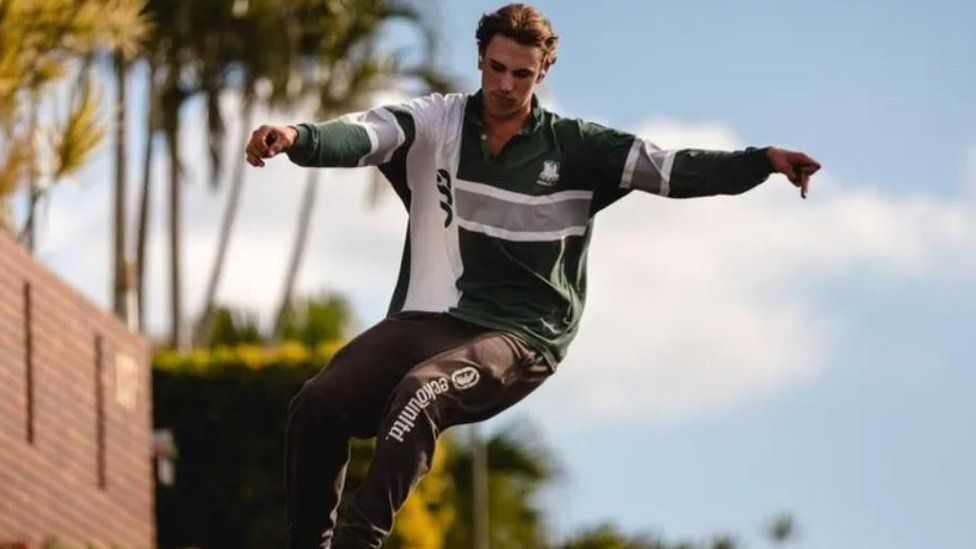 GoFundMe
GoFundMeAccording to authorities, an American gentleman passed away after being buried alive in dust on a shore.
On Saturday, Josh Taylor was at a beach camp on Queensland’s Bribie Island when he apparently fell into an opening that had been made for animal roasting.
Soon after the incident, Mr. Taylor, 23, was airlifted to the doctor, but he passed away from his wounds on Thursday.
Authorities are also looking into the events that caused his death.
There “may get many people who were present and are yet to talk with officers,” according to a statement from Queensland Police.
According to local media, Mr. Taylor was with friends on Bribie Island, a well-known camping area 65 kilometers ( 40 miles ) north of Brisbane, when the incident took place.
According to The Courier Mail, it took around 15 people to free him before animals soldiers and paramedics arrived to perform CPR on him.
The family of Mr. Taylor confirmed that his life assistance had been terminated on Thursday.
They described him as” the best son, brother, boyfriend, and mate we could all have wished for,” who would be missed “every minute of every day,” according to Nine News in an emotional statement.
The family speech continued,” Unfortunately, the injury he received were too serious for him to overcome,” and they also expressed gratitude to the medical staff for their assistance. ……………………………………
Mr. Taylor was described as” a vibrant and exciting spirit who has brought so much pleasure to those around him” on a fundraising website set up on behalf of his parents.
The Taylor family has received more than A$ 65, 000 ($ 42, 000,$ 34, 000 ) in support.
Give a thoughtful Christmas gift: From documentary-style family portraits to professional home organisation

Modern living can be enormous, chaotic, and stressful. Some of that conflict is calmed down by the Home Organization support from Naki.
Never a cleanup company, this. Instead, it adjusts each person’s room to their interests and way of life.
I’ll make a fabric club in your closet if you’re someone who enjoys wearing jeans. I’ll make a part in your house specifically for baking puff pastries if that’s your hobby. If you travel frequently, I’ll make a grab-and-go place out of all your travel necessities, according to chairman Nakita Saldhana.
Saldhana remarked that this” creates a new way of life optimized to help you develop in the place.” Just keep in mind that this is a judgment-free and private encounter if you’re giving it to your friend.  ,
S$ 85 per minute is the cost. The final price is determined by the size and scope of the work. It could take eight to ten hours to prepare a home.


